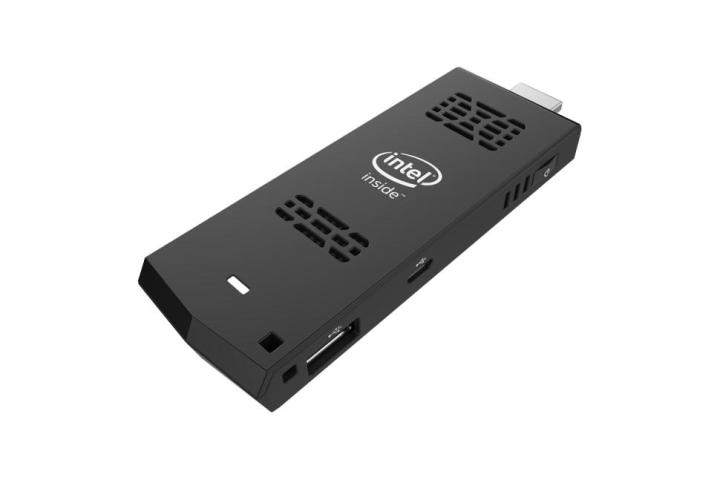
The Compute Stick looks and feels like a plus-sized thumb-drive. While not as small as that form of portable storage, the device is able to easily disappear behind an HDTV or even most monitors. There’s no Windows device on the market today that’s smaller except, of course, for the CTL Compute Stick, a very similar device that’s already on sale.
We spoke to Intel about CTL’s product, and other imitators and China, and the company’s spokespeople confirmed those products are very similar to Intel’s own device. The main difference is cooling. Intel’s model is actively cooled by a small fan, which in theory means it can be equipped with more powerful Core processors. CTL’s version, on the other hand, is passively cooled, so it can only run an Intel Atom.
Intel’s stick pairs the processor with two gigabytes of RAM, and the 32GB internal drive can be expanded with microSD cards. The Compute Stick doesn’t shine in the connectivity department, carrying merely the basics: Wi-Fi 802.11 b/g/n, Bluetooth 4.0 and micro-USB in addition to HDMI. This version will sell for $149 with an Atom processor. Potential pricing of more powerful versions, and their availability, remains unannounced.
A stripped-down Linux version with half the RAM and only eight gigabytes of on-board storage will also be available for $89.
The Compute Stick is likely the least powerful computer we saw at CES, but its small size and affordable price make it an exciting alternative to traditional desktops. We’re eager to see how it stacks up when it hits stores in March.
Editors' Recommendations
- Intel Battlemage graphics cards: release date speculation, price, specs, and more
- Intel Arc Alchemist: specs, pricing, release date, performance
- Update your PC: Intel has fixed Alder Lake’s biggest gaming problem
- Micro Center spills the beans on Alder Lake, revealing price and release date
- Intel already has five gaming graphics card generations in the works


